Why you can trust Tom's Hardware
Comparison Products
Although the NV7000 has fairly common hardware, we want to test it against a range of drives to see if it has any nuances. This list of SSDs includes the Rocket 4 Plus-G, the Rocket 4 Plus, the Rocket, the Rocket Q, and the Rocket Q4, all from Sabrent. We also have the Seagate FireCuda 530, the Team A440 Pro, the Team Z44Q, and the WD Red SN700.
Trace Testing - 3DMark Storage Benchmark
Built for gamers, 3DMark’s Storage Benchmark focuses on real-world gaming performance. Each round in this benchmark stresses storage based on gaming activities including loading games, saving progress, installing game files, and recording gameplay video streams.


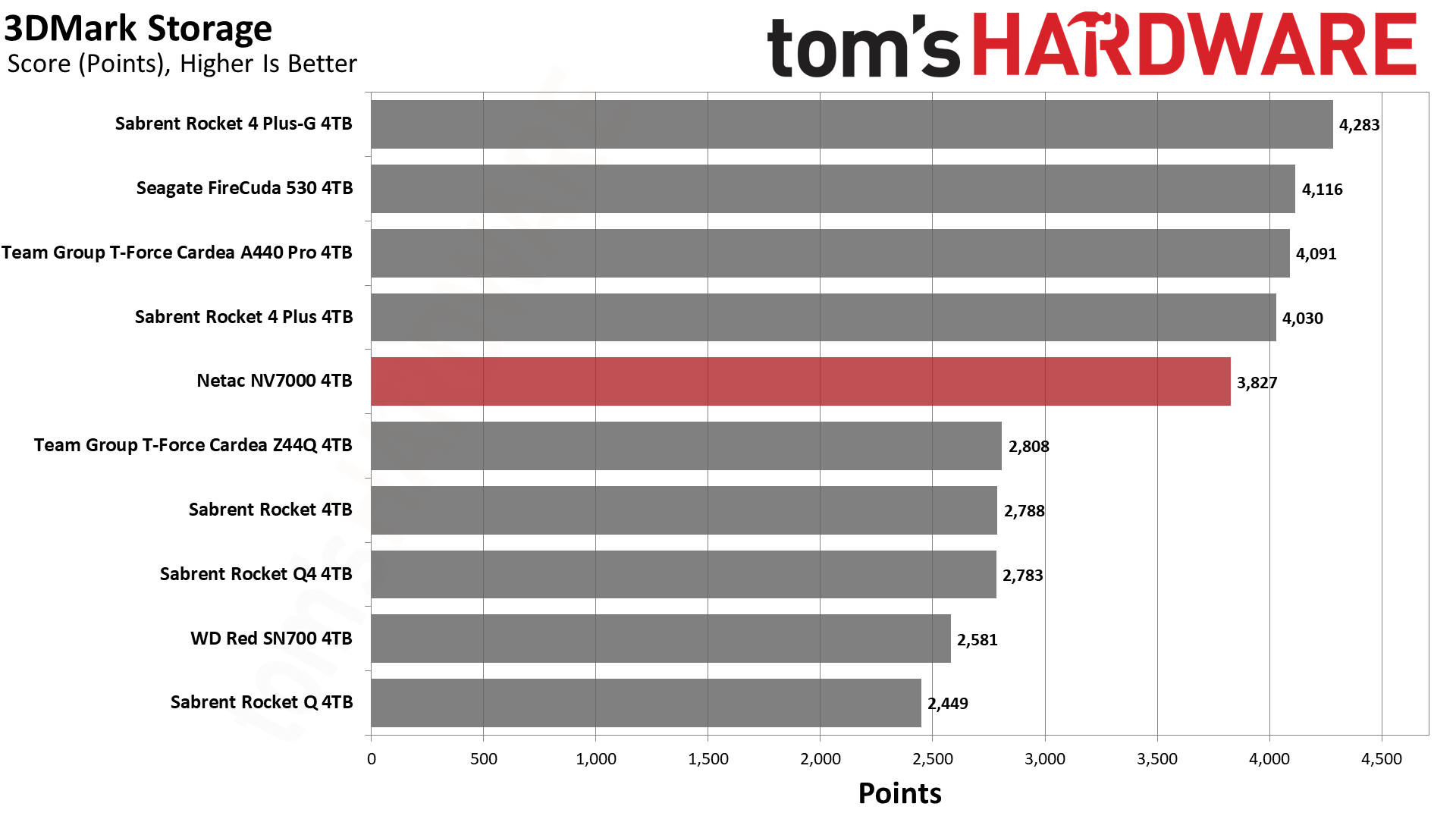
The NV7000 performs well enough in 3DMark, although not quite as well as its peers that share the same hardware. The Sabrent 4 Plus-G leads the overall score category with a 12% higher score.
Trace Testing – PCMark 10 Storage Benchmark
PCMark 10 is a trace-based benchmark that uses a wide-ranging set of real-world traces from popular applications and everyday tasks to measure the performance of storage devices.
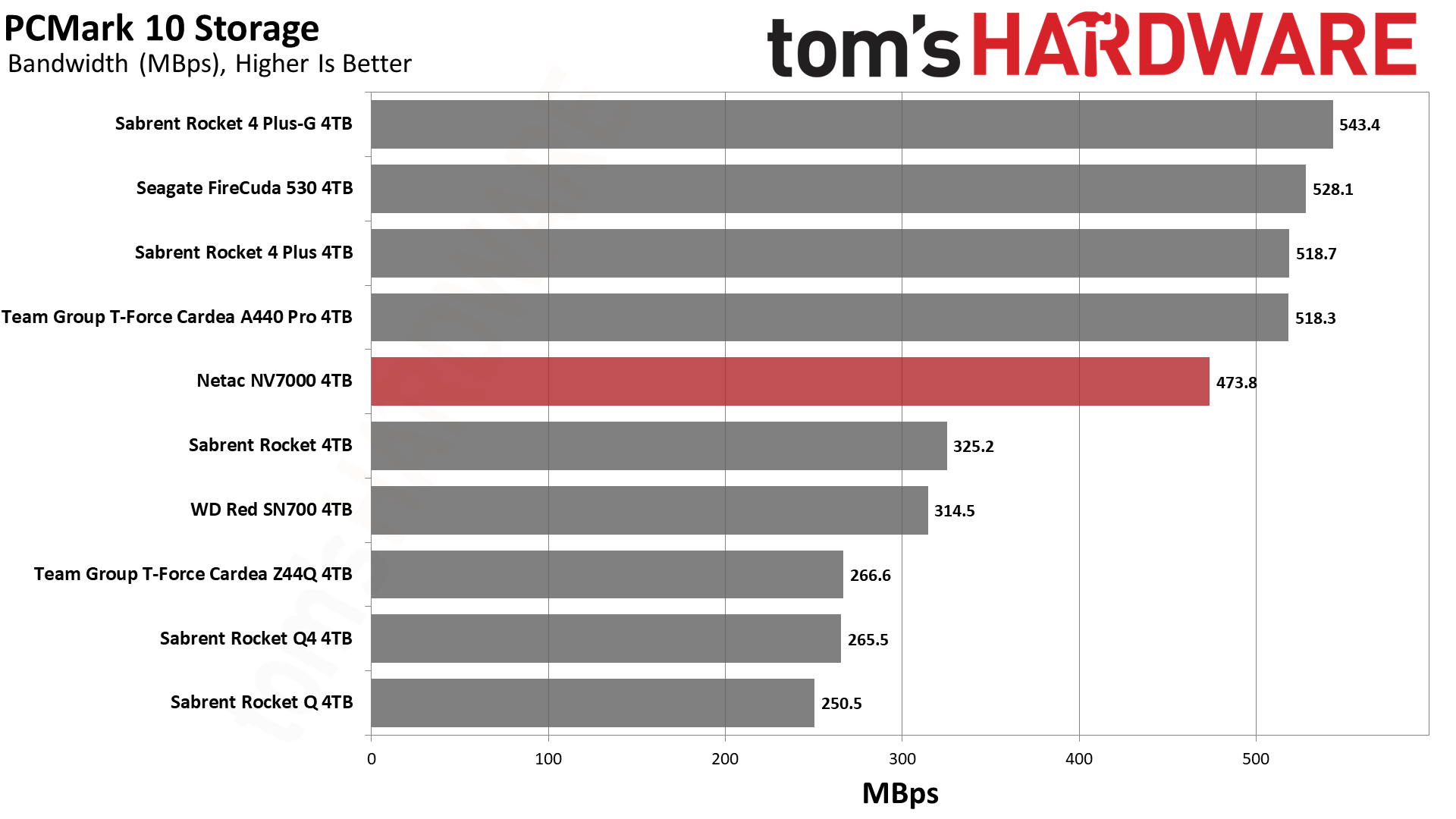
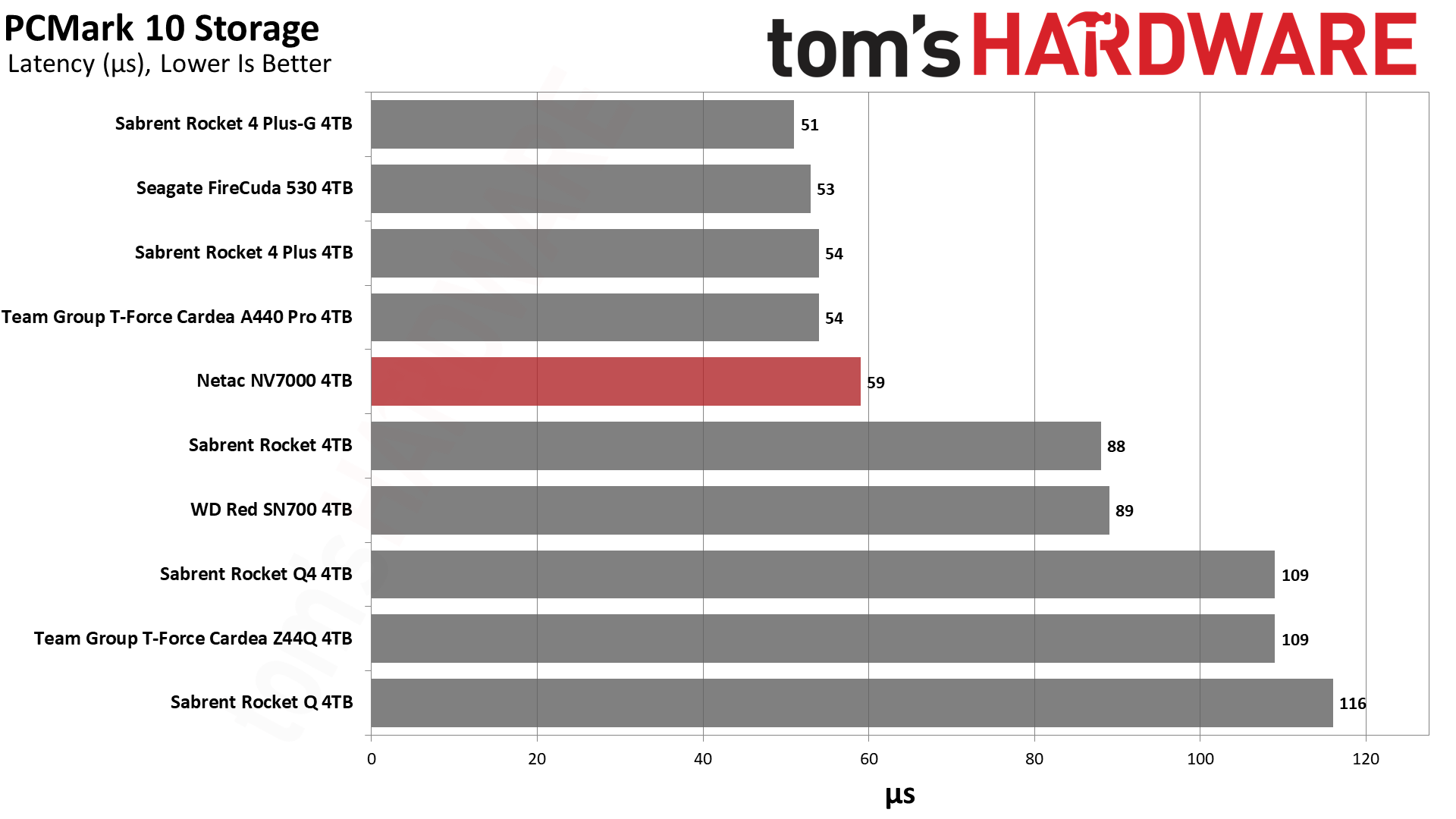
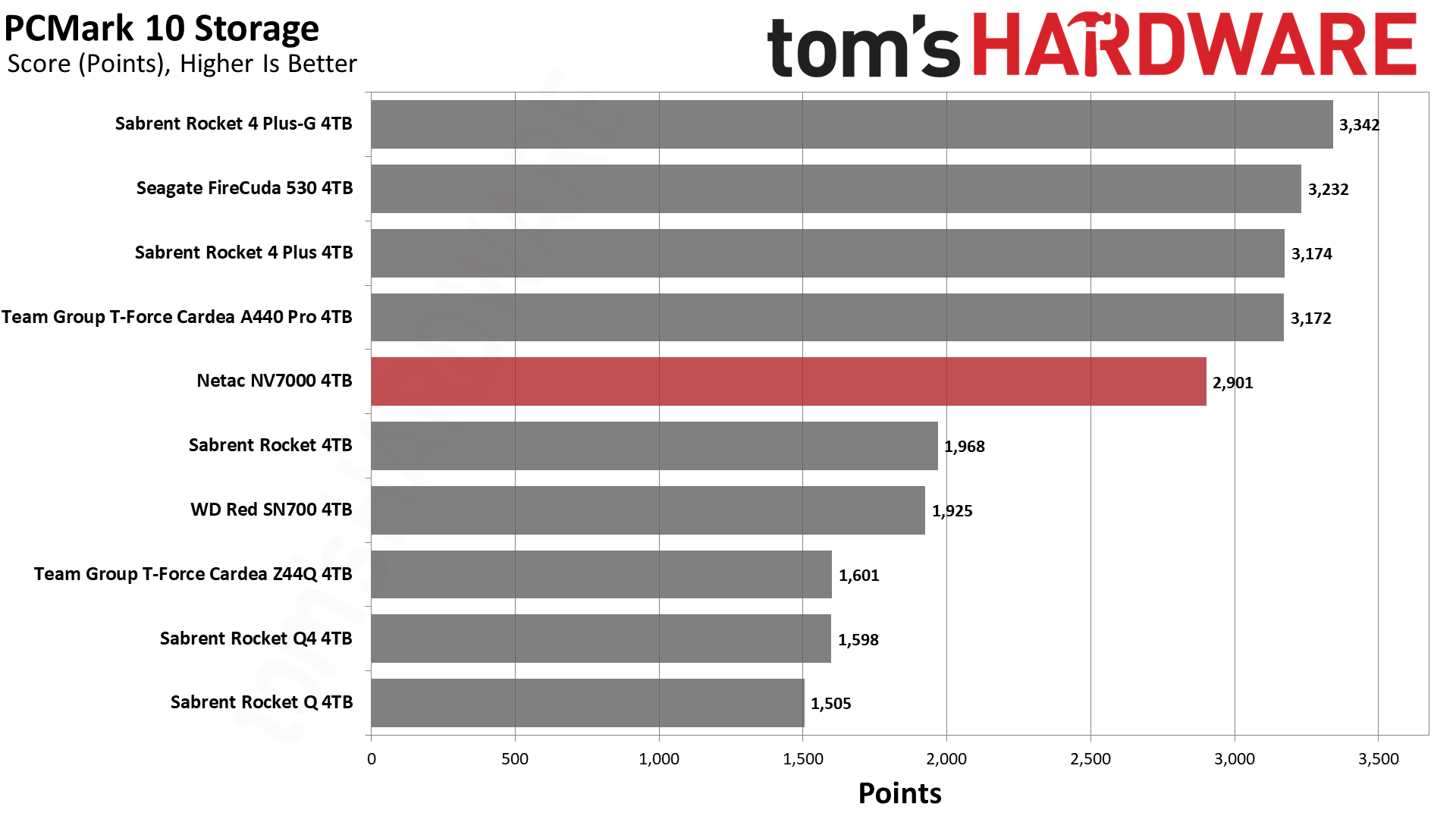
The story is the same with PCMark 10. This drive is clearly a leap over the previous generation of drives and has more bandwidth than less expensive PCIe 4.0 options, but it isn’t compelling against its direct competitors.
Transfer Rates – DiskBench
We use the DiskBench storage benchmarking tool to test file transfer performance with a custom, 50GB dataset. We copy 31,227 files of various types, such as pictures, PDFs, and videos to a new folder and then follow-up with a reading test of a newly-written 6.5GB zip file.



The NV7000 does shine during file copy workloads, however, going toe-to-toe with the exceptional Rocket 4 Plus-G. The 4 Plus-G is a refined version of the original 4 Plus, using Phison’s I/O+ firmware. This firmware is designed for DirectStorage, which includes sustained workloads.
Get Tom's Hardware's best news and in-depth reviews, straight to your inbox.
The Seagate FireCuda 530 also recently received this same firmware update, but it is not applied to our test result in the list. The firmware has not been prominent on other E18 drives, however, it is present on all Phison E26 drives like the Crucial T700, the Gigabyte Aorus 10000, the Seagate FireCuda 540, and the Corsair MP700.
Synthetic Testing - ATTO / CrystalDiskMark
ATTO and CrystalDiskMark (CDM) are free and easy-to-use storage benchmarking tools that storage vendors commonly use to assign performance specifications to their products. Both of these tools give us insight into how each device handles different file sizes.
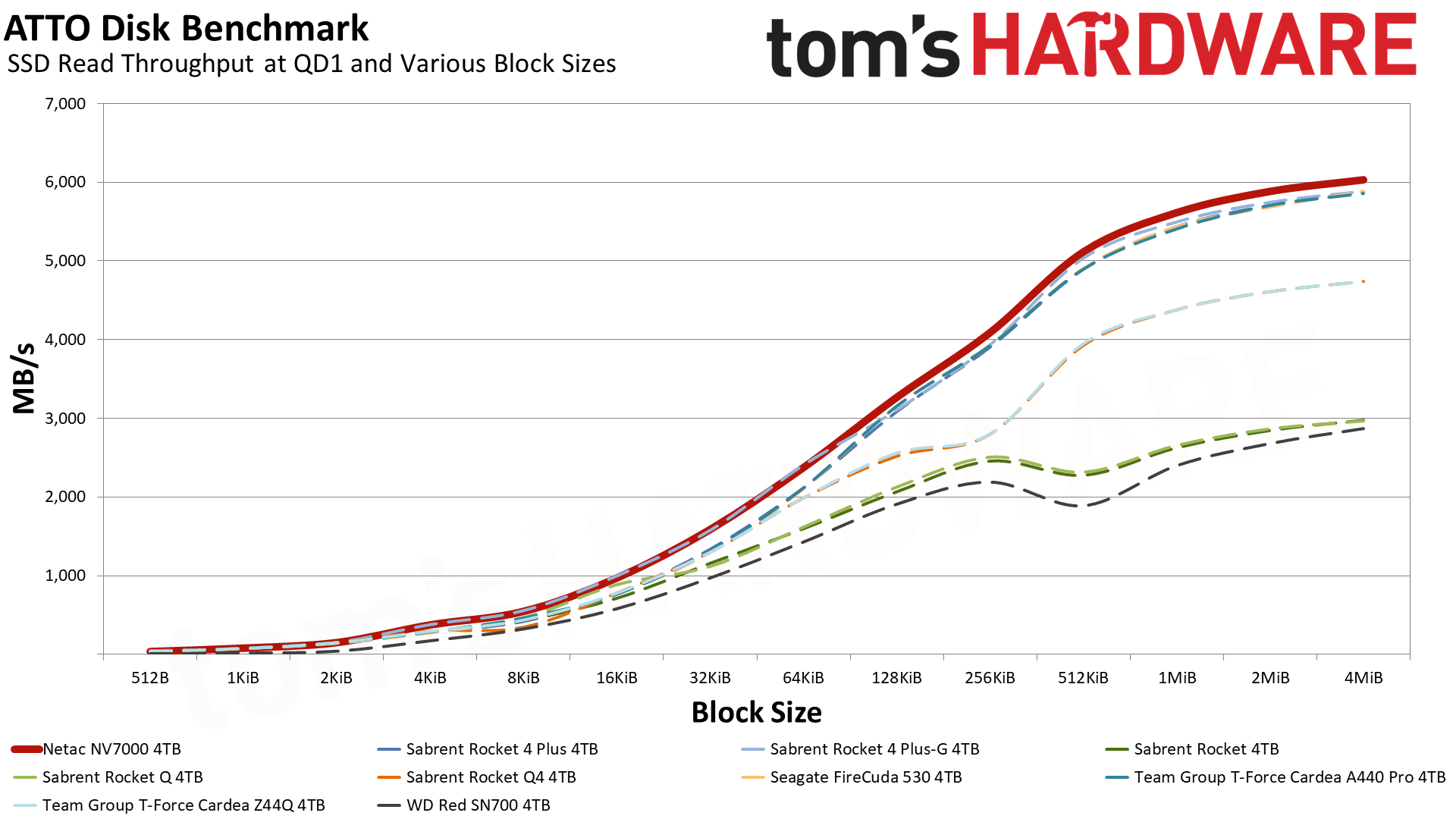

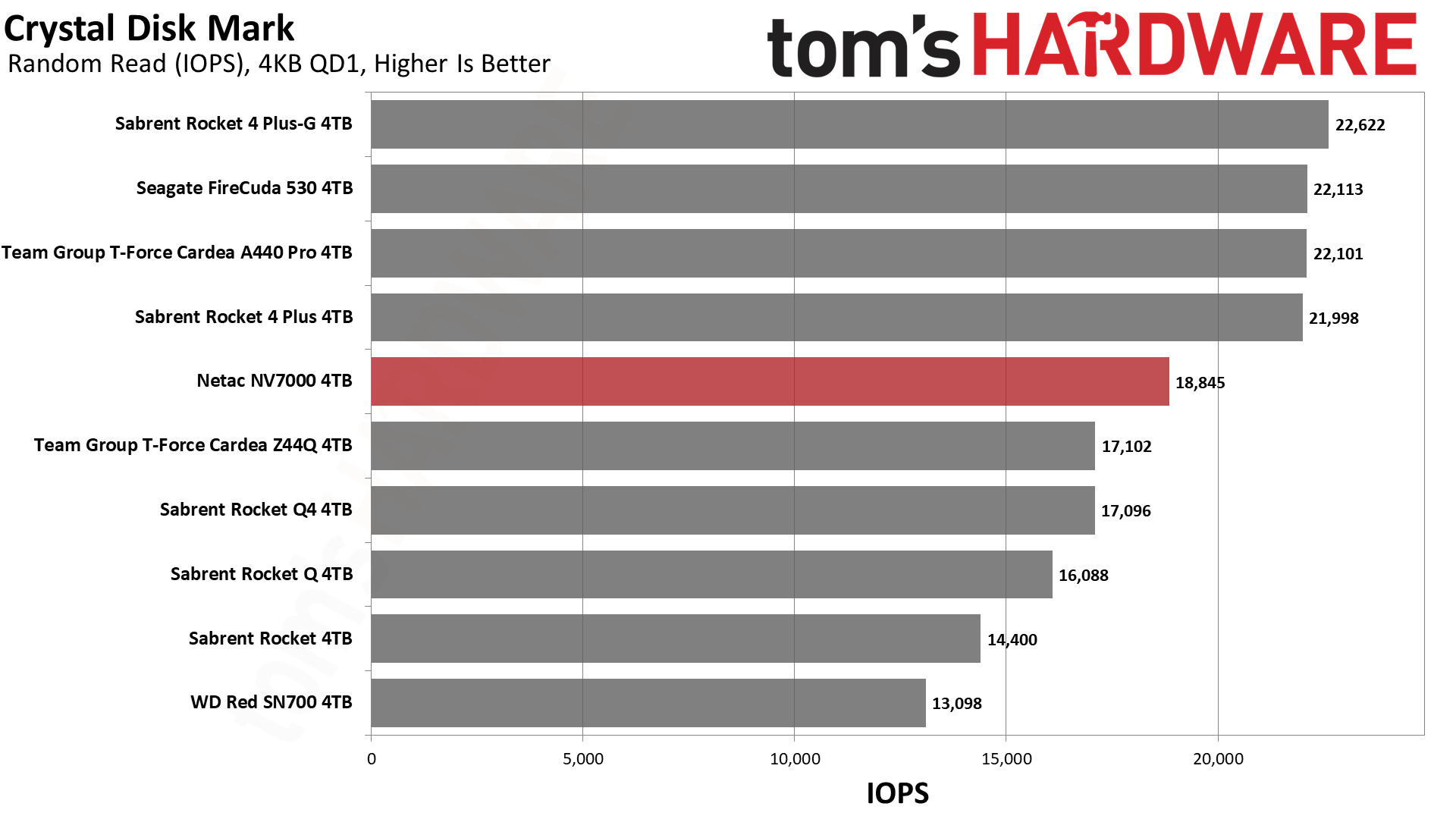
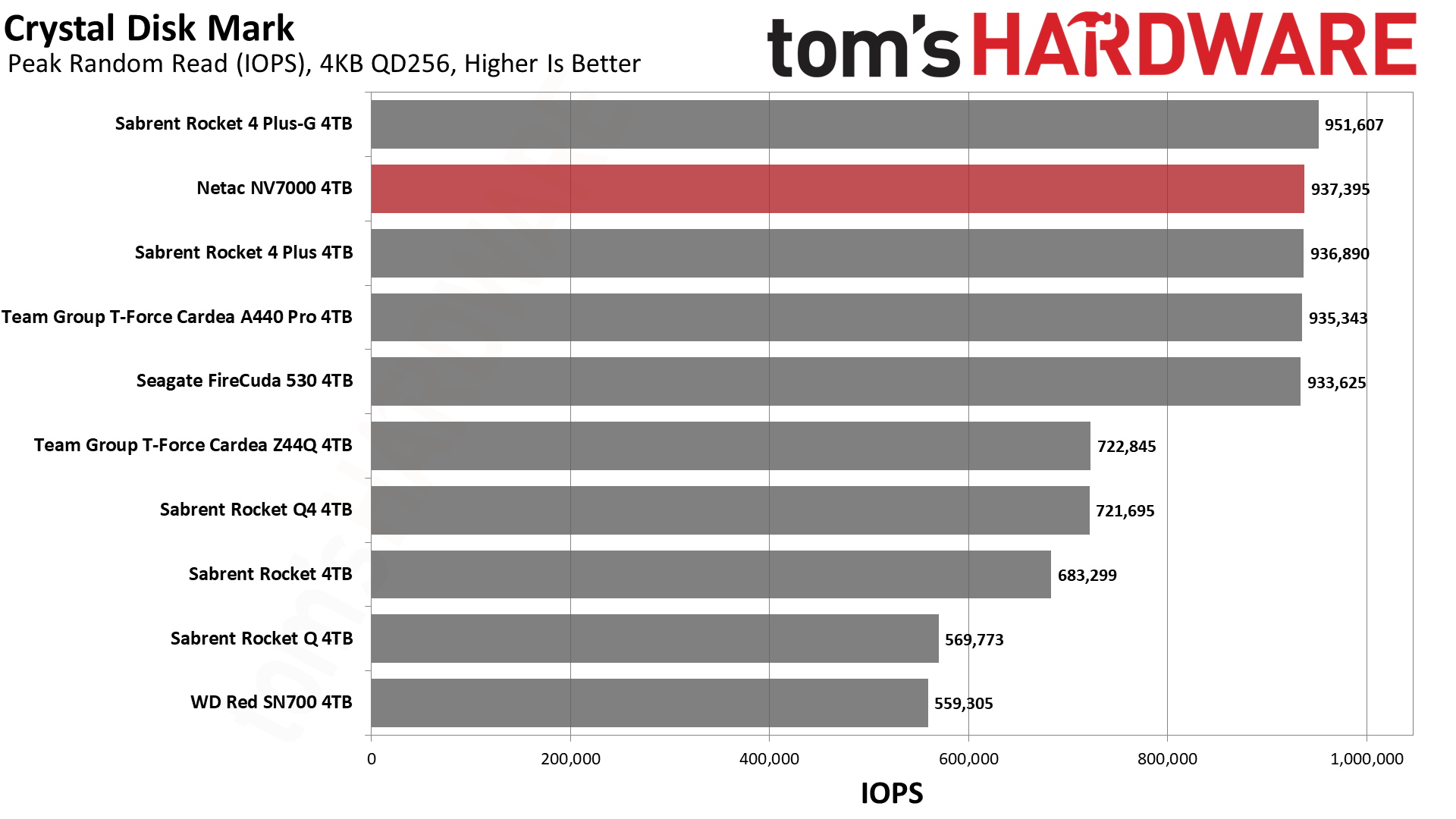
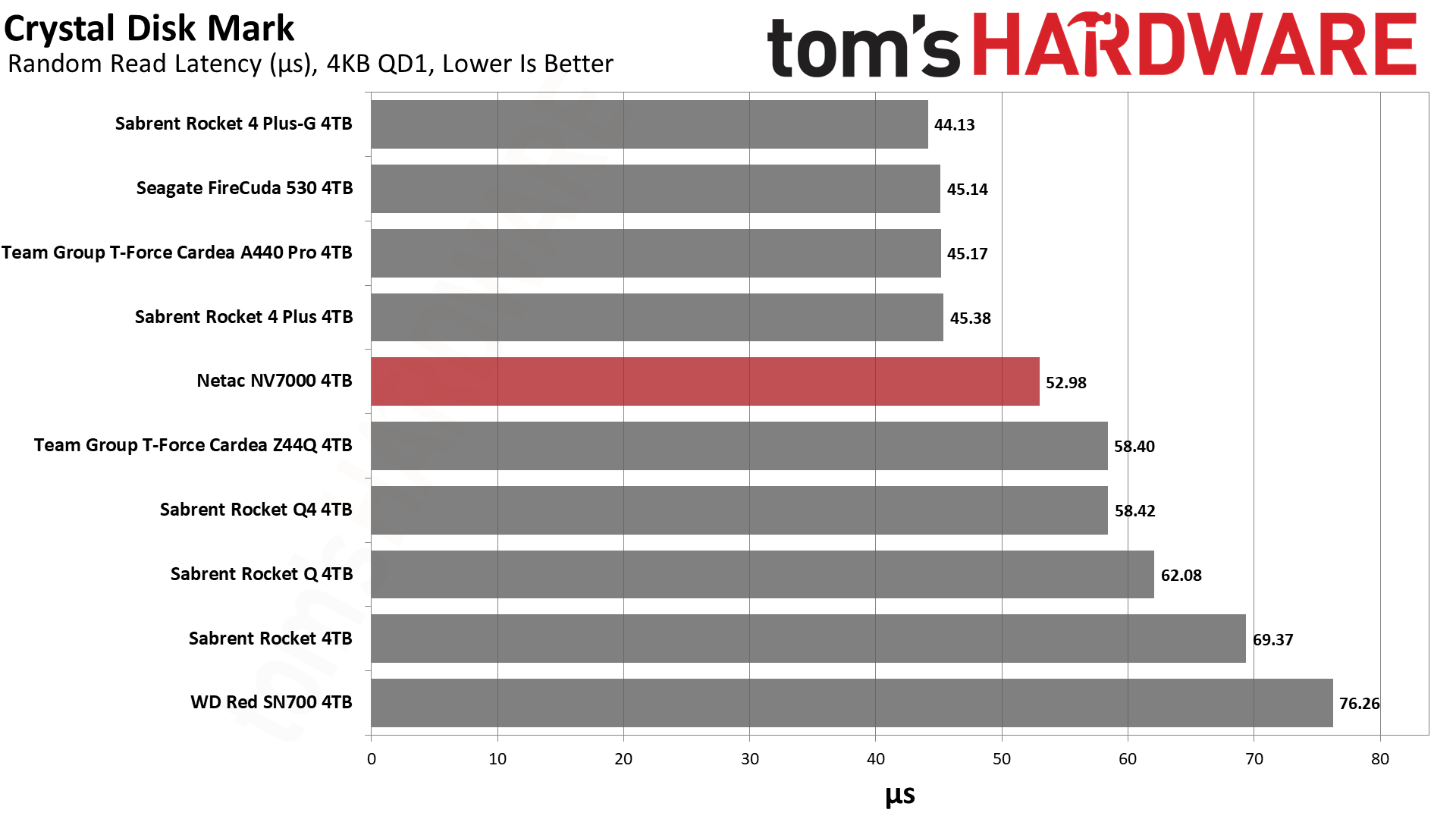
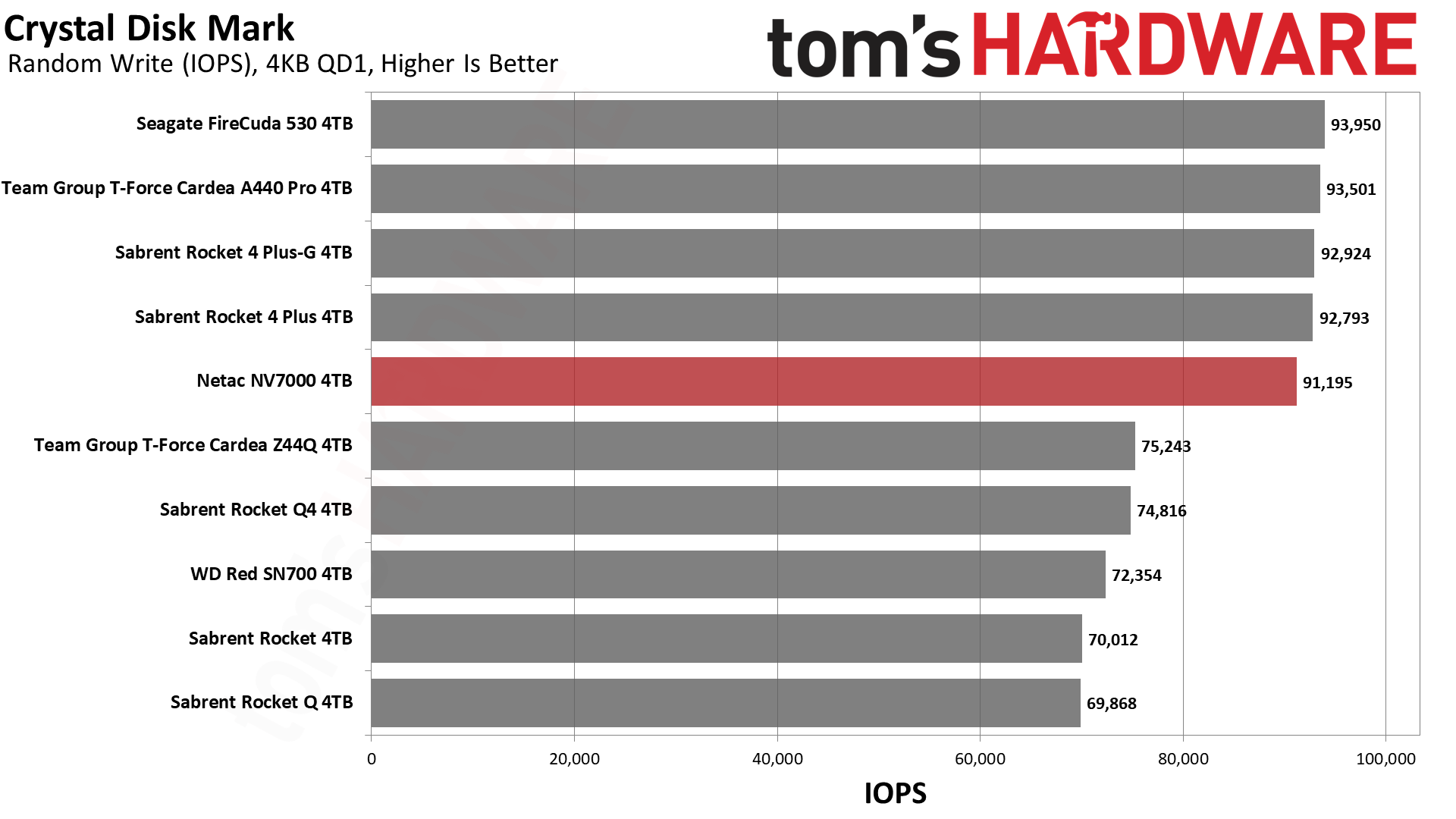
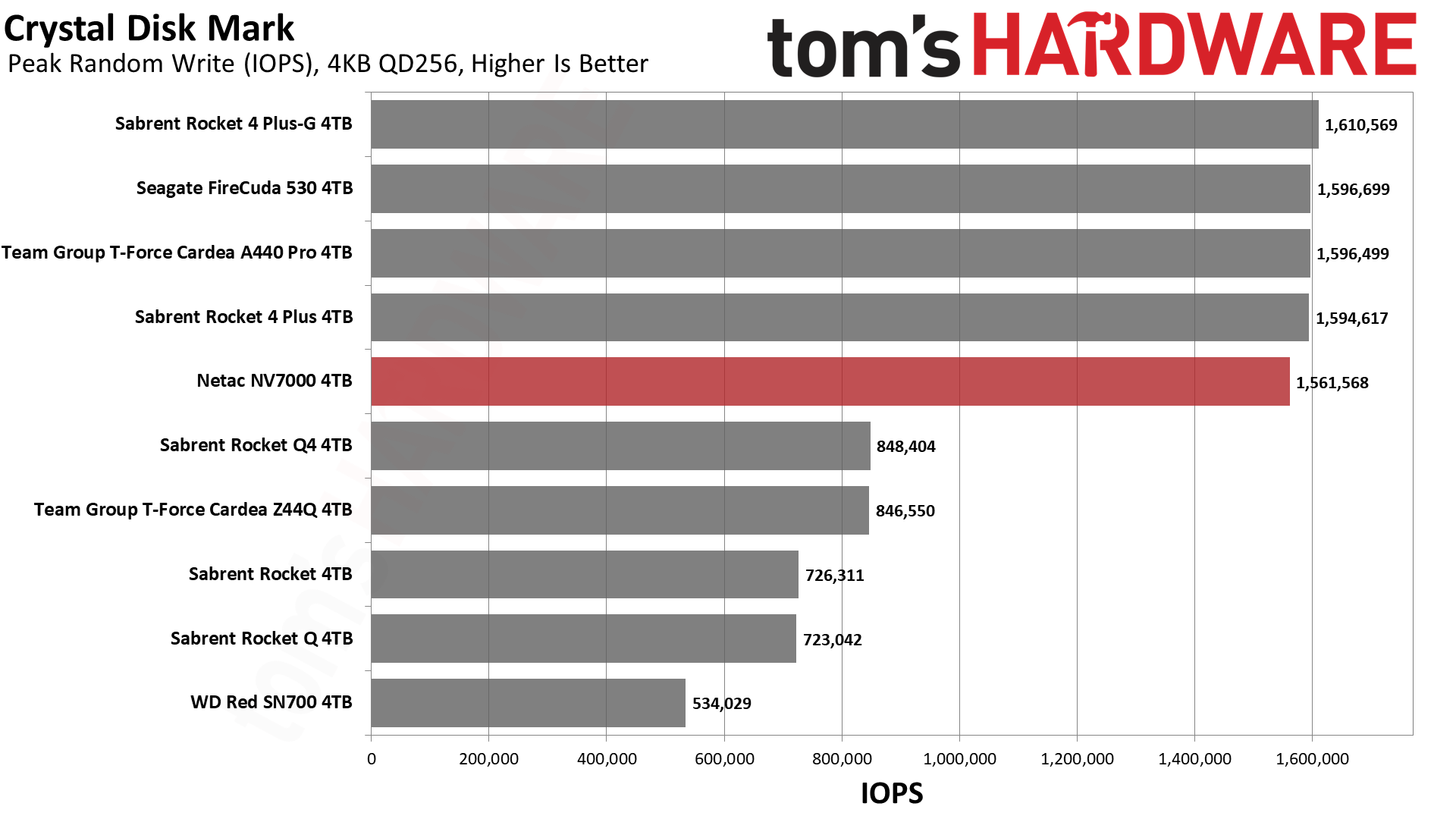
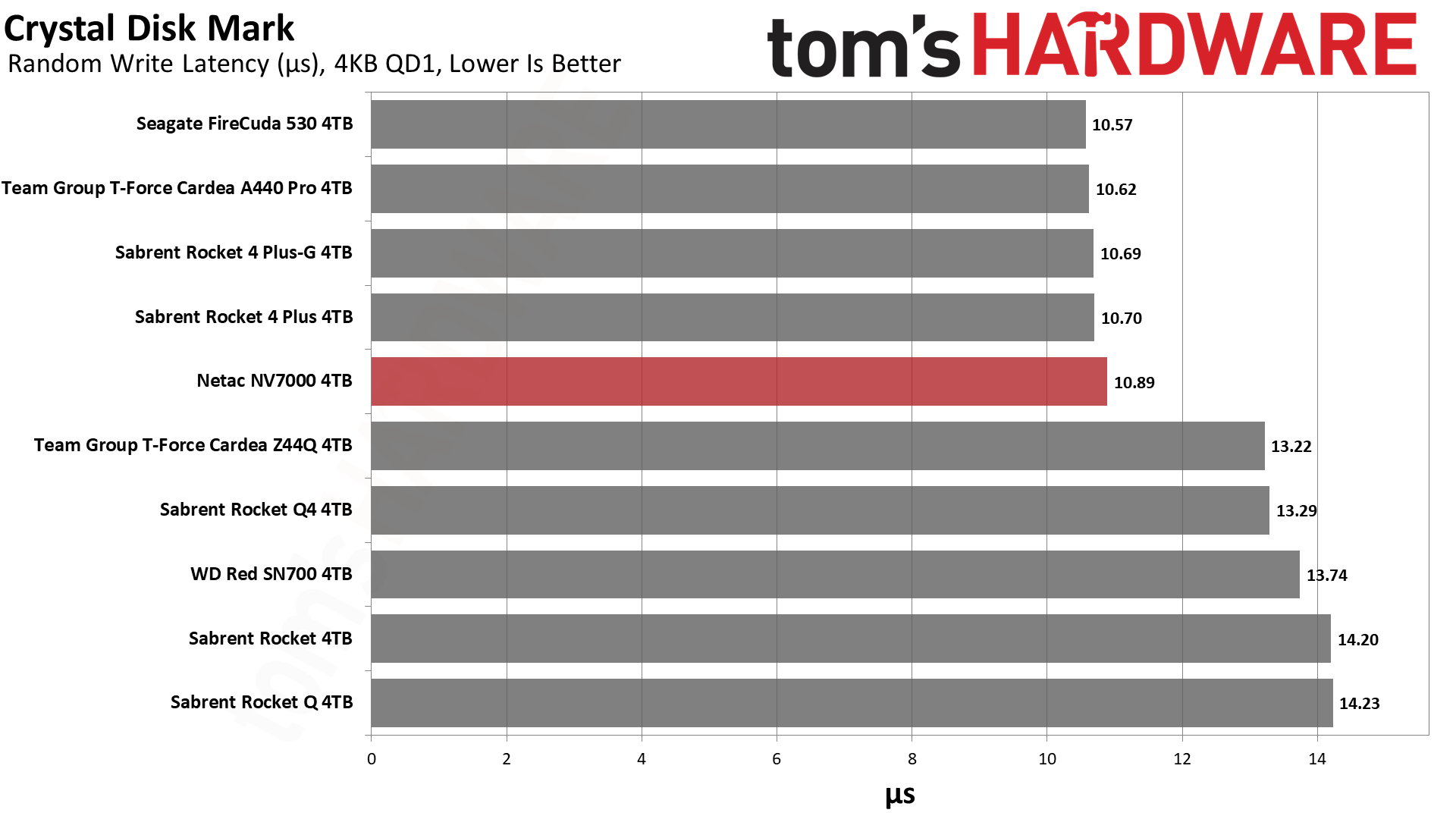



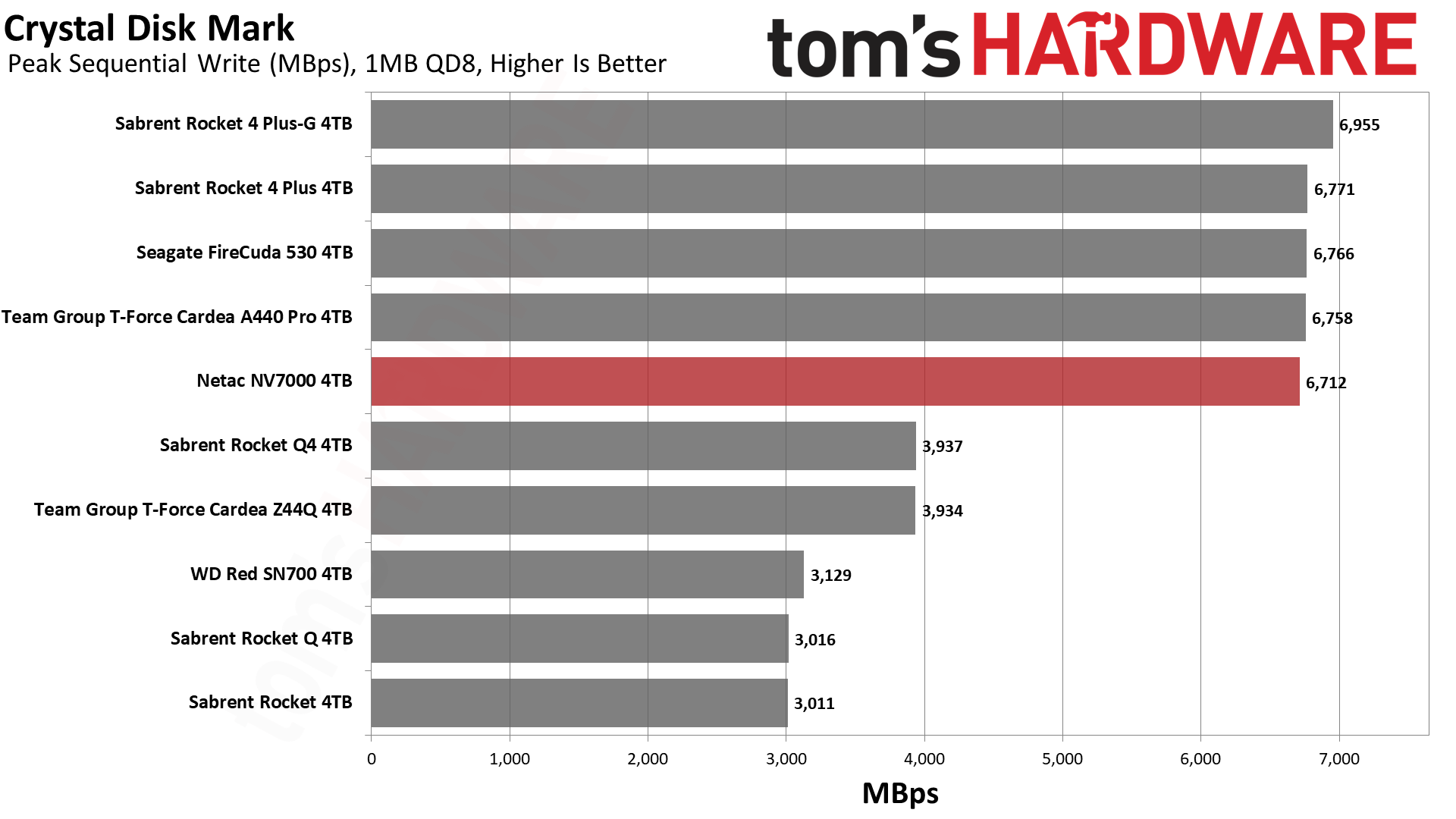
Sequential performance is quite good on the NV7000 in both ATTO and CDM. Random 4KB performance, on the whole, is not bad, but there is a noticeable dip for low queue depth random read latency.
Sustained Write Performance
Official write specifications are only part of the performance picture. Most SSDs implement a write cache, which is a fast area of (usually) pseudo-SLC programmed flash that absorbs incoming data. Sustained write speeds can suffer tremendously once the workload spills outside of the cache and into the "native" TLC or QLC flash.
We use Iometer to hammer the SSD with sequential writes for 15 minutes to measure both the size of the write cache and performance after the cache is saturated. We also monitor cache recovery via multiple idle rounds.
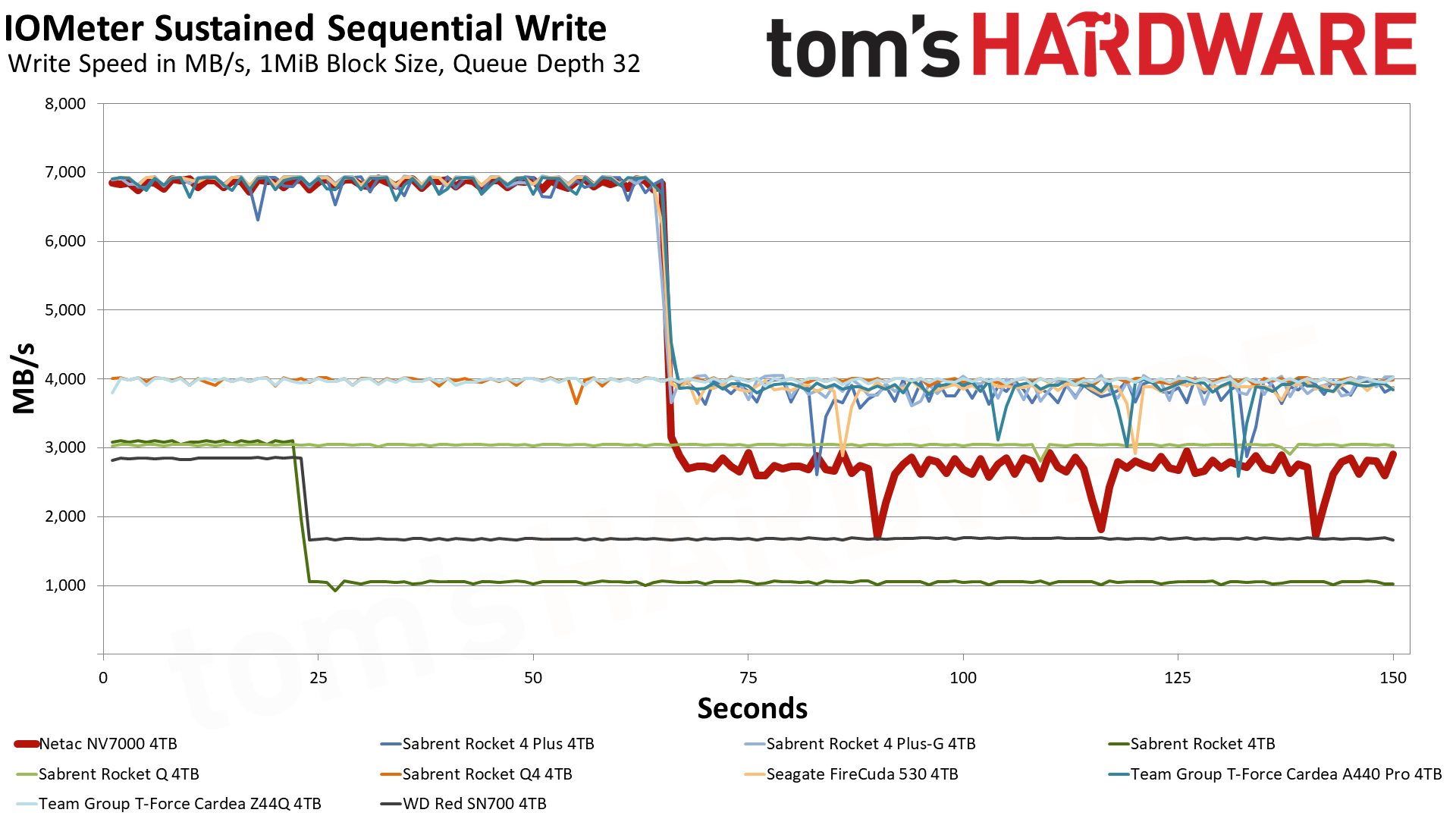
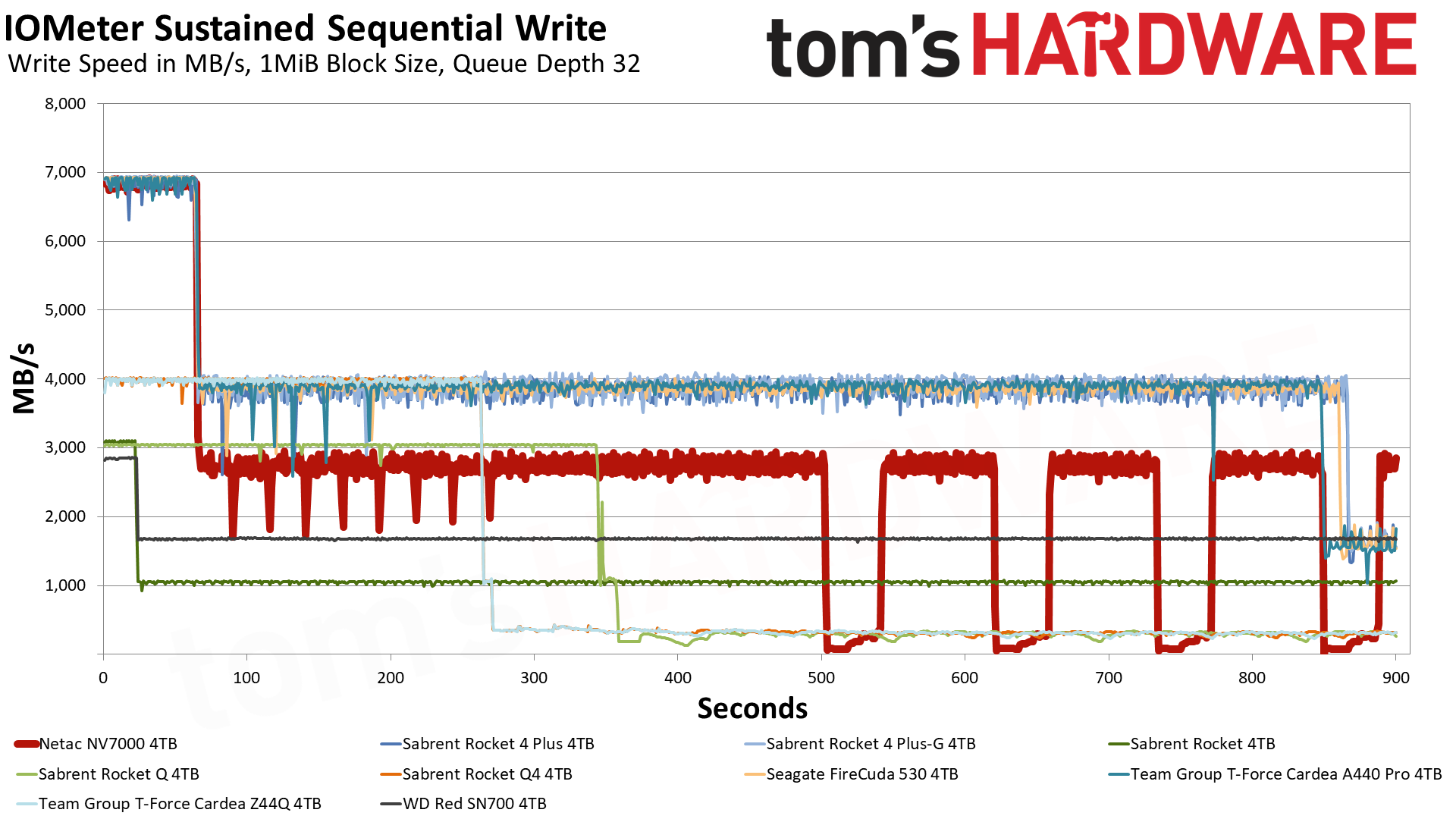
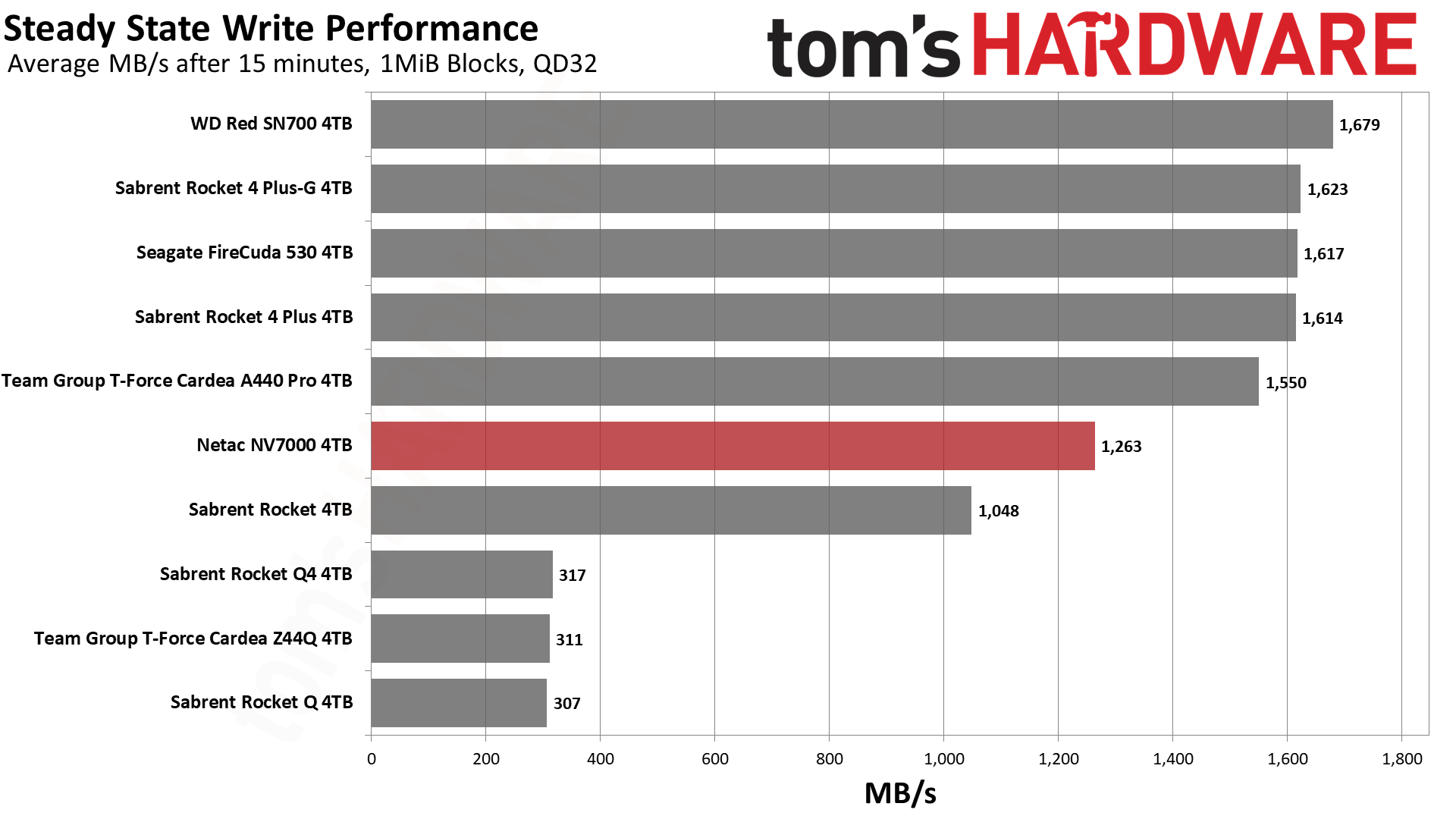
The NV7000 writes at high speed in its pSLC mode before dropping down to a slower TLC mode, and then eventually struggles to an extremely slow state that brings down its steady state write performance. Its cache is relatively conservative, similar to the other E18 drives on the chart, so its overall performance is lower than expected. The precise speed is less important than the pattern of inconsistency that we see. In normal use, this won’t be a problem, but it does suggest Netac is doing something different, especially when considering the uneven results from other benchmarks.
We have seen some performance inconsistencies like this before on drives that use lower-quality but still consumer-grade flash. After all, you’re not going to hit these endurance numbers with bad NAND. However, there can be performance issues when stress testing, particularly if you’re trying to ensure sufficient write endurance for warranty. This could lead to higher read latency, too. This is pure speculation, but it will not impact performance too deeply, particularly on the PS5. However, it does mean this drive needs to be a less expensive alternative to a drive like the FireCuda 530, for instance.
We will add that this type of performance result is not restricted to lesser-known brands like Netac, as we also had lower write performance with the 2TB Team A440 Pro. Micron confirmed that the flash used on that drive, which we detected as having lower rated endurance, is completely legitimate and could find its way onto any number of drives. That could ostensibly include drives destined for lower-intensity work, like PS5 drives. Our advice is that if an E18 drive seems too inexpensive to be true, it’s probably one that is best fit for console use.
Power Consumption
We use the Quarch HD Programmable Power Module to gain a deeper understanding of power characteristics. Idle power consumption is an important aspect to consider, especially if you're looking for a laptop upgrade as even the best ultrabooks can have mediocre storage.
Some SSDs can consume watts of power at idle while better-suited ones sip just milliwatts. Average workload power consumption and max consumption are two other aspects of power consumption, but performance-per-watt is more important. A drive might consume more power during any given workload, but accomplishing a task faster allows the drive to drop into an idle state more quickly, ultimately saving energy.
For temperature recording we currently poll the drive’s primary composite sensor during testing with a 24C ambient.
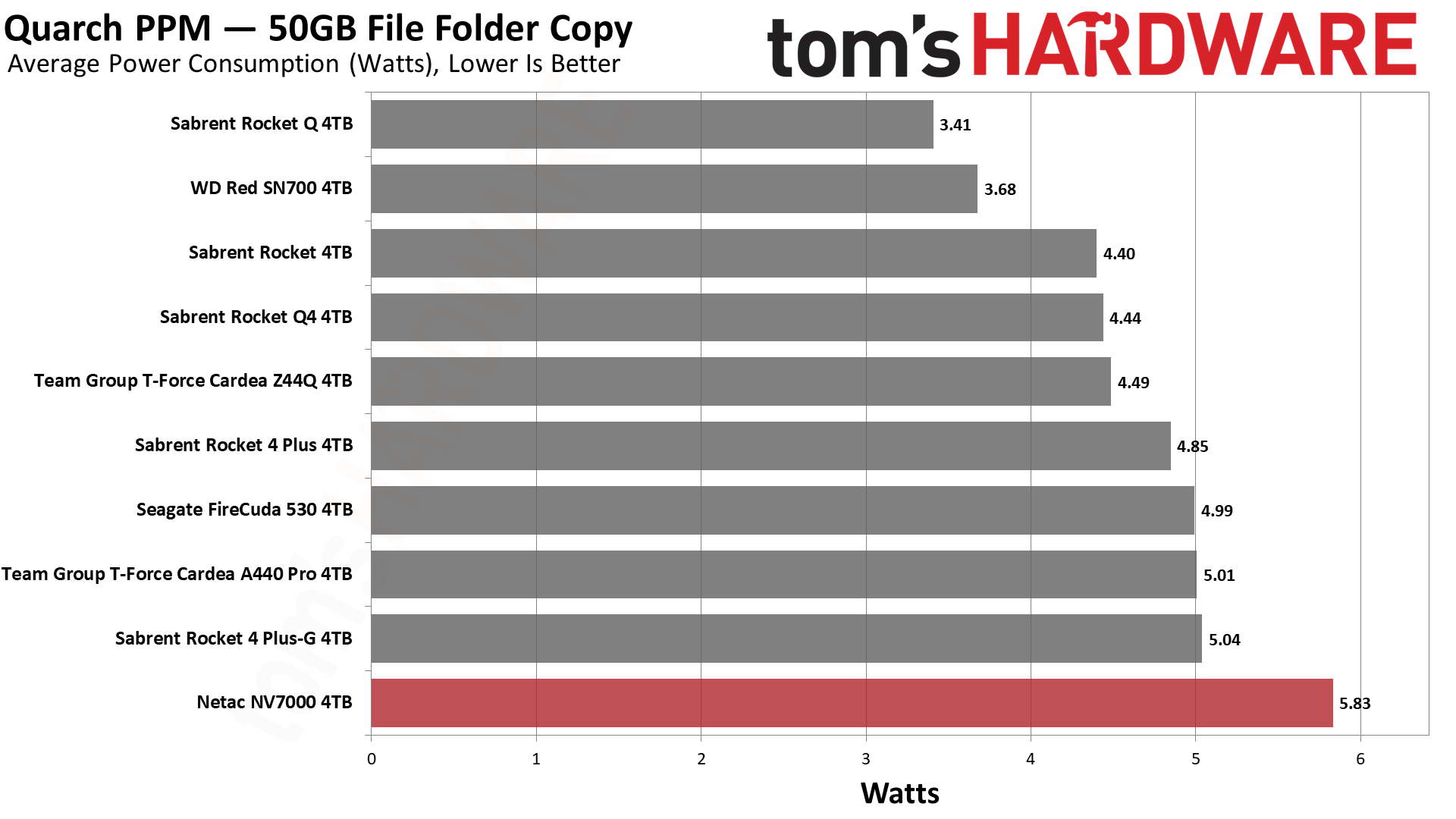

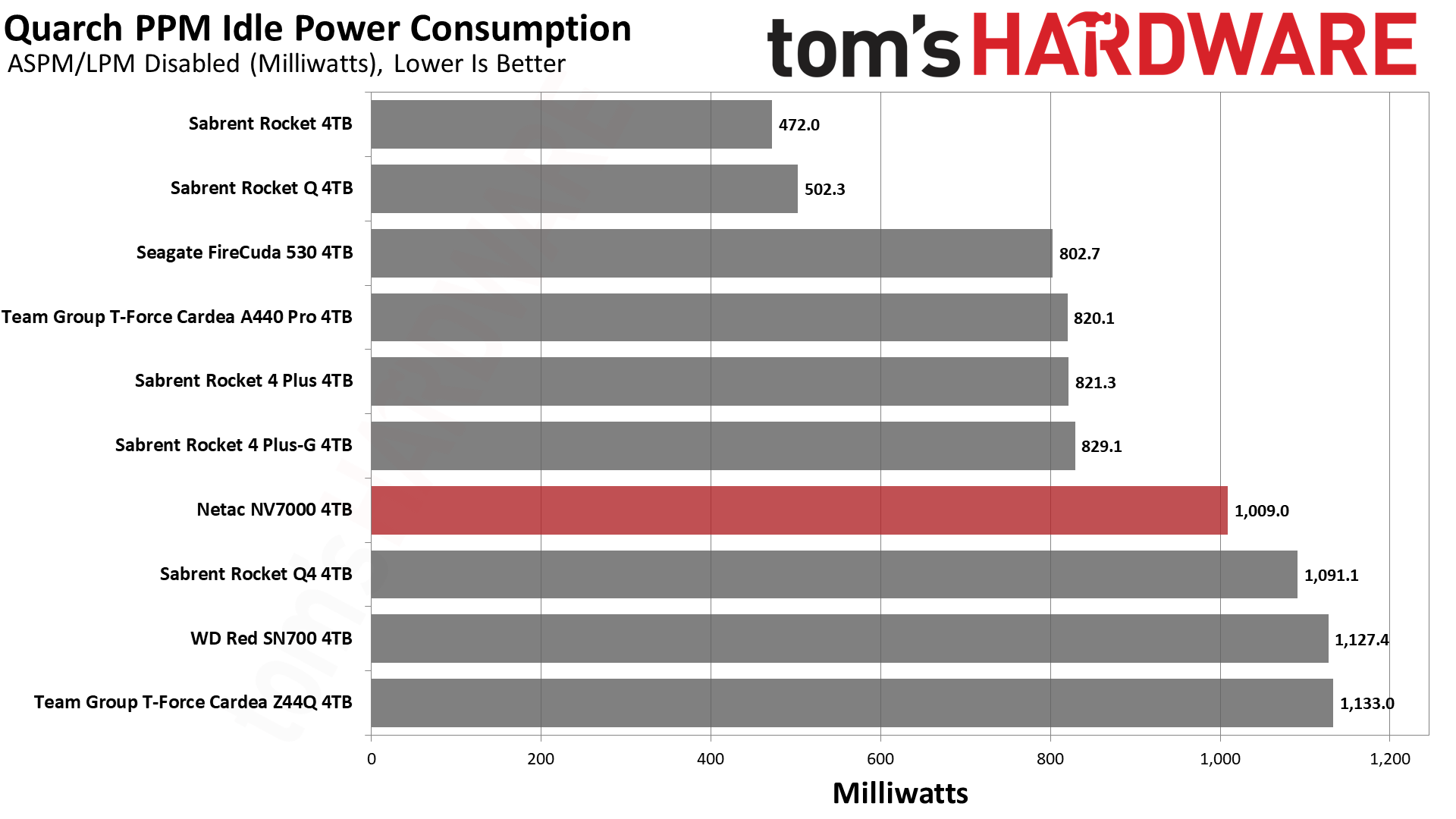
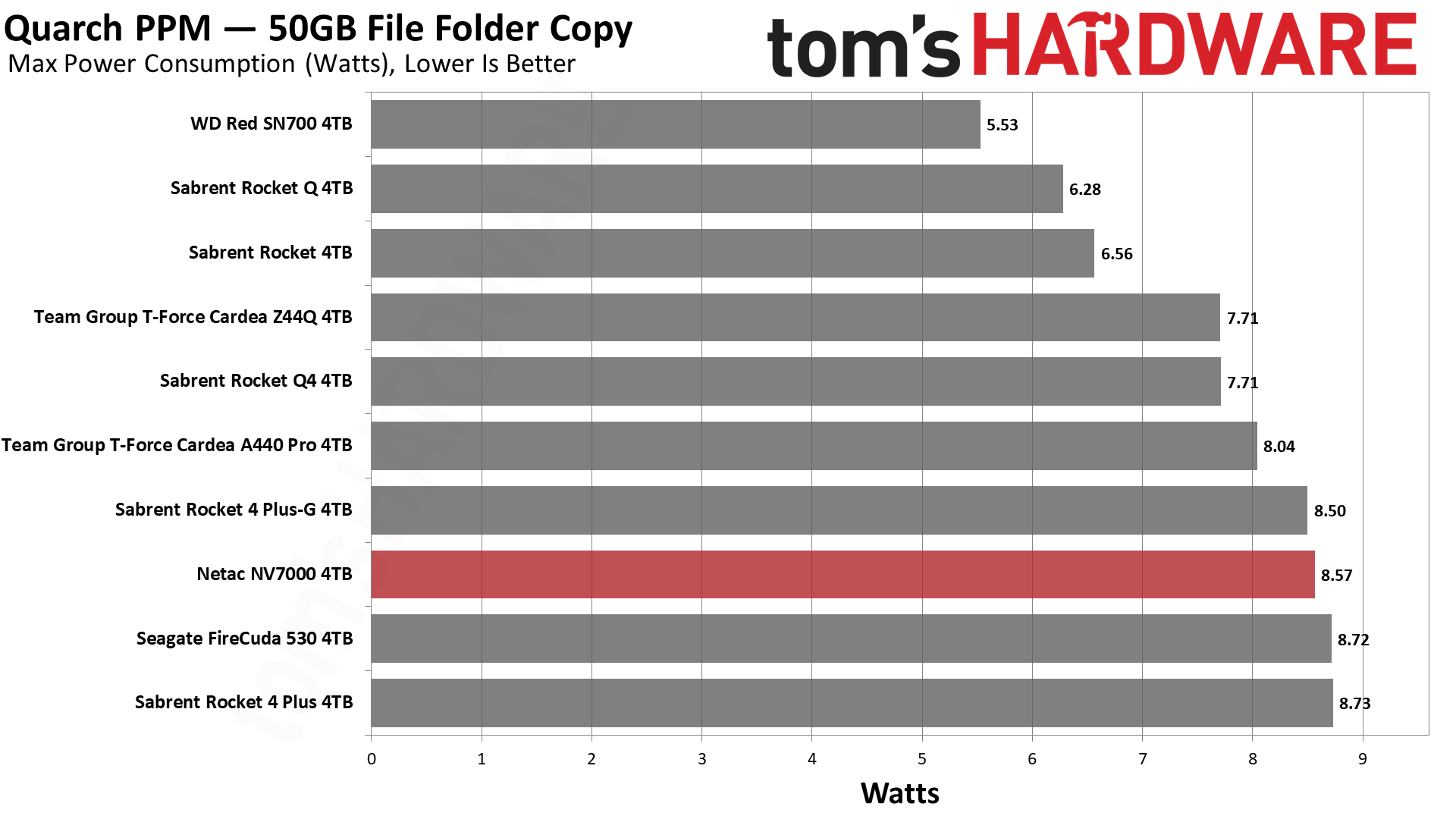
The NV7000’s power efficiency is merely average. We’re used to seeing far more efficient drives these days, but this is not a drive you should buy for a laptop anyway.
Temperature-wise, the NV7000 idled at 33C and hit a maximum of 75C during testing. This is below the throttling temperature and is quite good, considering the workload. This drive appears designed for the PS5 and would be fine with the included heatsink, but it would also work in a high-end desktop PC.
Test Bench and Testing Notes
| CPU | Intel Core i9-12900K |
| Motherboard | Asus ROG Maximus Z790 Hero |
| Memory | 2x16GB G.Skill DDR5-5600 CL28 |
| Graphics | Intel Iris Xe UHD Graphics 770 |
| CPU Cooling | Enermax Aquafusion 240 |
| Case | Cooler Master TD500 Mesh V2 |
| Power Supply | Cooler Master V850 i Gold |
| OS Storage | Sabrent Rocket 4 Plus 2TB |
| Operating System | Windows 11 Pro |
We use an Alder Lake platform with most background applications such as indexing, Windows updates, and anti-virus disabled in the OS to reduce run-to-run variability. Each SSD is prefilled to 50% capacity and tested as a secondary device. Unless noted, we use active cooling for all SSDs.
Conclusion
The Netac NV7000 is a run-of-the-mill high-end PCIe 4.0 SSD, excelling in no one area and coming with some performance inconsistencies. We don’t necessarily think this is down to Netac, and it may be a wider problem due to how the flash and SSD markets are currently spiraling. It’s become commonplace for even reputable manufacturers to change the underlying SSD hardware whenever it’s convenient, whether that's the controller, flash, or both. This is extremely typical outside of Western markets but is essentially worldwide at this point, with perhaps some nervousness for Maxio controllers and YMTC flash in the U.S.
Netac and other lesser-known brands are making a push into other markets, including Amazon. They often use comparable hardware to better-known brands, but to compete, they still ultimately have to offer drives at a lower price point. It’s not uncommon to get very good prices if you can wait through other avenues like AliExpress, too. It’s worth looking at these drives as, quite honestly, the impressive results we saw with the Predator GM7 show that there’s still room for growth with PCIe 4.0 SSDs. That may include the soon-to-be-released NV7000-t, but the base NV7000 is largely disappointing at this stage.
We would recommend this drive for use in the PS5 to get extra storage that will effectively be as fast as it gets. We'll need to see a price reduction for that to make sense, though. It’s also probably not our first choice for desktop PC or workstation use, given the plethora of better options. We also know the lower-capacity NV700s have shown up with different hardware, and, although largely okay, some caution is necessary — particularly as the alternative IG5236 controller has known issues with YMTC TLC flash.
If you’re looking for an alternative but sticking with this class of drive, you’re better off with the Sabrent Rocket 4 Plus-G, Sabrent Rocket 4 Plus, Seagate FireCuda 530, or similar drives that have very high sustained sequential write performance.
MORE: Best SSDs
MORE: Best External SSDs and Hard Drives
MORE: How We Test HDDs And SSDs
MORE: All SSD Content

Shane Downing is a Freelance Reviewer for Tom’s Hardware US, covering consumer storage hardware.
